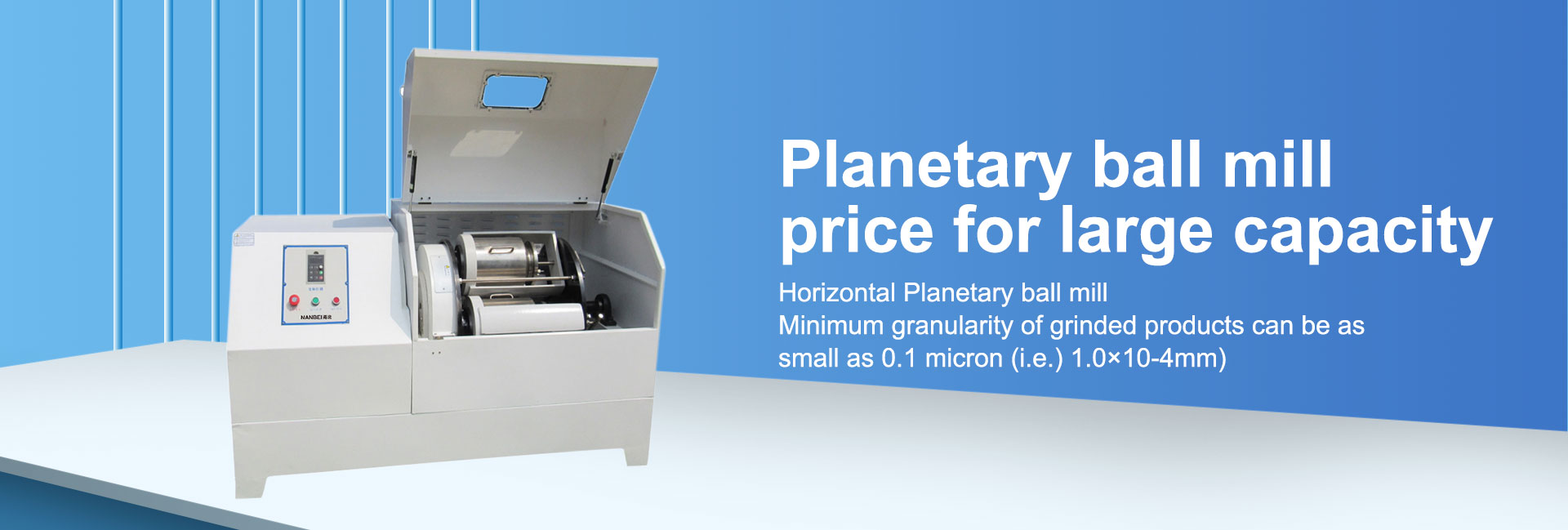How to Choose a Laboratory Ball Mill
The pretreatment of solid samples in the laboratory is usually done by means of a ball mill. So how do we choose a suitable laboratory ball mill? We usually need to know the specific situation of the sample. Here is what we need to know before purchasing the machine.
 I. Sample category
I. Sample category
The first thing to be clear is what the material to be ground is and which category it belongs to.
II. The feed size and output size of the sample
The second is to find out what the particle size of the sample before grinding is, or the shape of the sample,that is, it is powder, granular, block, strip, etc., and the particle size of the discharged material after grinding, that is, how fine it is to be ground.
III. Sample size
The other is the approximate amount of sample to be ground each time, preferably calculated by volume, because ball mills generally use cylindrical grinding jars for charging, and each sample has different densities, so the quality of the samples that can be loaded in each jar is not consistent. You can estimate it roughly according to the daily experiment situation or the mass volume formula. The sample loading volume is generally one-third to two-thirds of the volume of the ball milling tank, and there is also a grinding ball loading space and grinding space.
IV. Temperature environment
Some heat-sensitive samples have strict temperature requirements, and the ball mill will generate a lot of heat due to the impact and friction of the grinding balls, which will increase the temperature of the ball mill tank. Therefore, if the sample has requirements for the temperature environment, you need to choose a ball mill that can control the temperature.
V. Pollution requirements
The sample of the laboratory ball mill is in direct contact with the ball mill tank and the grinding ball. The sample may be mixed with the small particles of the tank and the ball during the grinding process, especially the stainless steel tank and the grinding ball, so if the subsequent testing experiment If there are requirements, it is necessary to avoid secondary pollution caused by ball milling. For example, for soil heavy metal detection, stainless steel balls and tanks cannot be used, but agate, zirconia, etc. should be used.
VI. Do you need to vacuum or inert gas for grinding?
For the grinding of samples that are flammable, explosive or easy to react with air, we need to consider vacuuming the ball mill tank or filling it with inert gas for grinding. This has certain requirements on the equipment motor and ball mill tank. For example, the planetary mill adopts an explosion-proof motor and a special ball mill tank. The ball mill tank can be evacuated or filled with inert gas through an external device connected to the pipeline, or a refrigerant can be passed in for temperature control.
VII. Follow-up use of samples
Sometimes although the same sample is being ground, it may be used to synthesize other substances, or it may be used for detection and analysis, which affects the choice of grinding accessories and models.
VIII. Sample source
The sources of various samples in the laboratory are inconsistent. Some are self-made, self-collected, and some are submitted for inspection. This involves issues such as frequency of use and equipment accessories.
IX. The use of equipment
Although the ball mill is a universal device, it does not mean that one instrument can grind all types of samples. If there are other samples to be grind in the laboratory, statistics can be made in advance to avoid buying equipment that only applies to certain samples. What needs to be made clear is whether the instrument is ready to be operated on the test bench or on the ground to see if anti-skid measures are taken.
The above is about the relevant matters you need to know before purchasing a laboratory ball mill. After understanding the relevant situation of the sample and the laboratory in accordance with the above aspects, you can generally choose the appropriate ball mill required by the laboratory.If you have any questions, please feel free to contact us.

 Oct 29,2020
Oct 29,2020

 2020-Oct-29
2020-Oct-29 
 2020-Oct-29
2020-Oct-29 